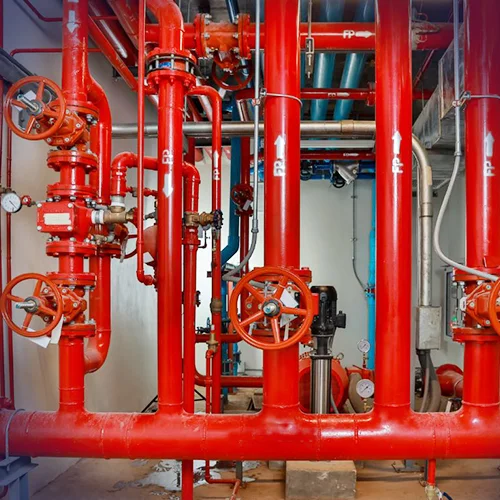Firefighting is a complex operation that involves not only courage and strategy but also the right infrastructure and equipment to combat the fierce nature of fires. Among these critical components, firefighting pipes stand as the backbone, ensuring a steady and reliable supply of water to extinguish flames and save lives. In this blog post, we delve into the intricacies of firefighting pipes, exploring their types, materials, installation, and the pivotal role they play in firefighting operations.
The Essence of Firefighting Pipes
Firefighting pipes, often referred to as fire suppression piping systems, are specialized pipes used to transport water or other fire retardant fluids from a source to the fire scene. These pipes are part of a larger fire protection system that includes pumps, valves, sprinklers, and hoses. Their primary function is to ensure that firefighters have immediate and adequate access to water at high pressure to combat fires effectively.
Types of Firefighting Pipes
Firefighting pipes can be broadly classified into two categories: standpipes and sprinkler pipes.
-
Standpipes are vertical pipes designed to distribute water to various levels of a building. They are equipped with hose connections at strategic locations, allowing firefighters to connect hoses directly and fight fires more efficiently, especially in high-rise structures.
-
Sprinkler pipes, on the other hand, form the backbone of automatic sprinkler systems. These are typically installed in the ceilings of buildings and are connected to a network of individual sprinkler heads designed to discharge water when a fire is detected.
Materials and Manufacturing
The choice of material for firefighting pipes is critical and depends on factors such as durability, pressure rating, and corrosion resistance. The most common materials used include:
-
Steel: Renowned for its strength and durability, steel pipes are widely used in both standpipe and sprinkler systems. They can withstand high pressures and are suitable for both underground and above-ground installations.
-
Ductile Iron: This material is often chosen for underground fire service mains due to its high tensile strength and corrosion resistance. Ductile iron pipes are also known for their impact resistance, making them ideal for areas prone to seismic activity.
-
CPVC (Chlorinated Polyvinyl Chloride): CPVC pipes are commonly used in sprinkler systems for light hazard installations, such as residential or commercial buildings. They are lightweight, easy to install, and offer good resistance to fire and chemicals.
Installation Considerations
The installation of firefighting pipes is governed by stringent codes and standards to ensure their effectiveness and reliability in emergency situations. These guidelines cover aspects such as pipe sizing, layout, support, and testing procedures. Proper installation is crucial for preventing leaks, maintaining water pressure, and ensuring that the pipes remain operational over time.
The Role in Firefighting Operations
The efficiency of firefighting operations heavily relies on the availability and functionality of firefighting pipes. In high-rise buildings, standpipes save crucial time by allowing firefighters to connect their hoses directly at the fire's level rather than pumping water from the ground up. Sprinkler systems, equipped with an extensive network of pipes, can control or even extinguish fires before the fire department arrives, significantly reducing damage and potential casualties.
Conclusion
Firefighting pipes are more than just conduits for water; they are lifelines in the event of a fire, representing a critical component of urban infrastructure and building safety. Their design, material selection, installation, and maintenance require careful consideration and adherence to codes and standards. As technology and materials advance, the evolution of firefighting pipes continues, aiming to enhance their efficiency and reliability, ultimately contributing to safer communities and more resilient structures against the threat of fire.
More Read: best firefighting pipes


